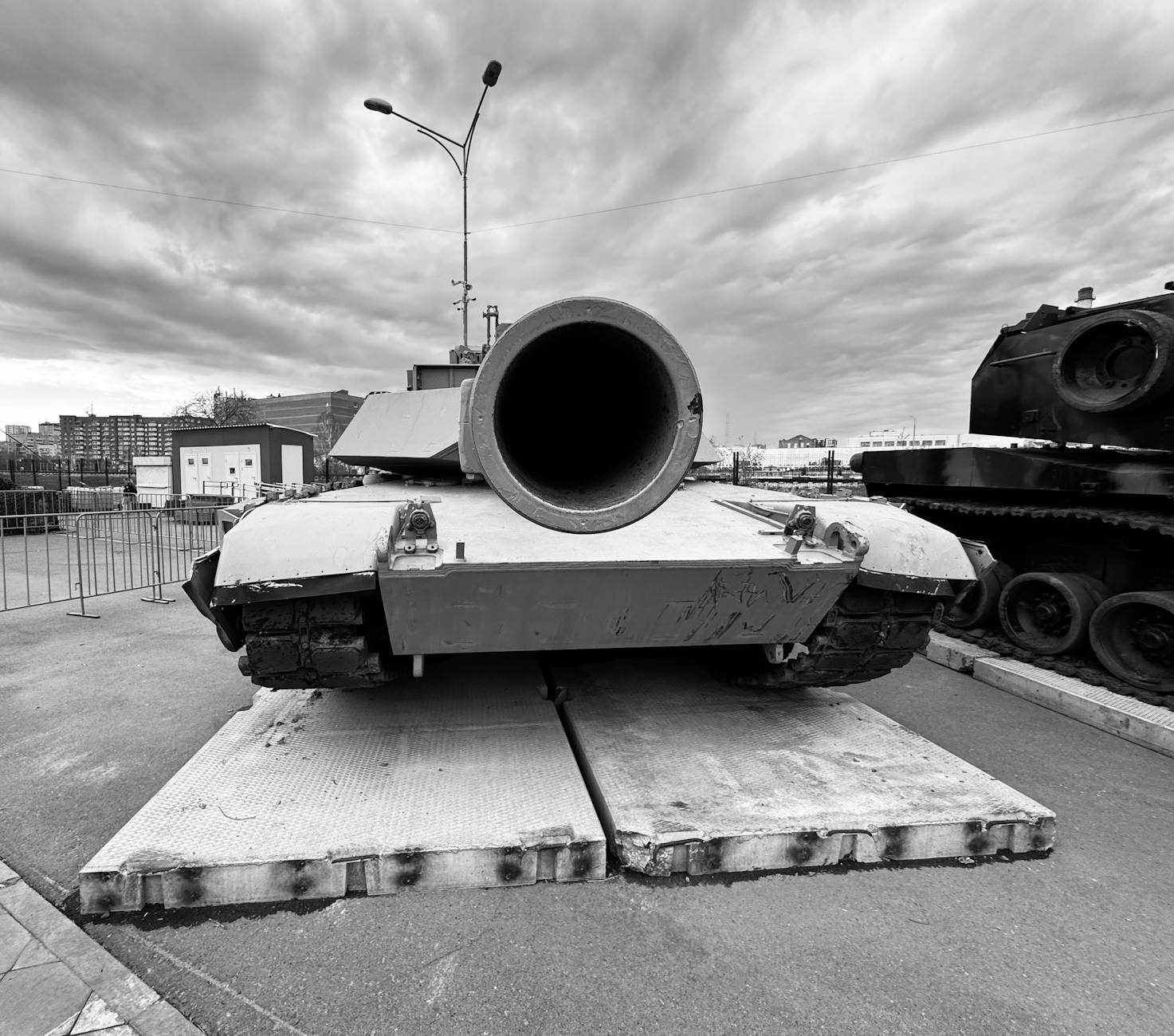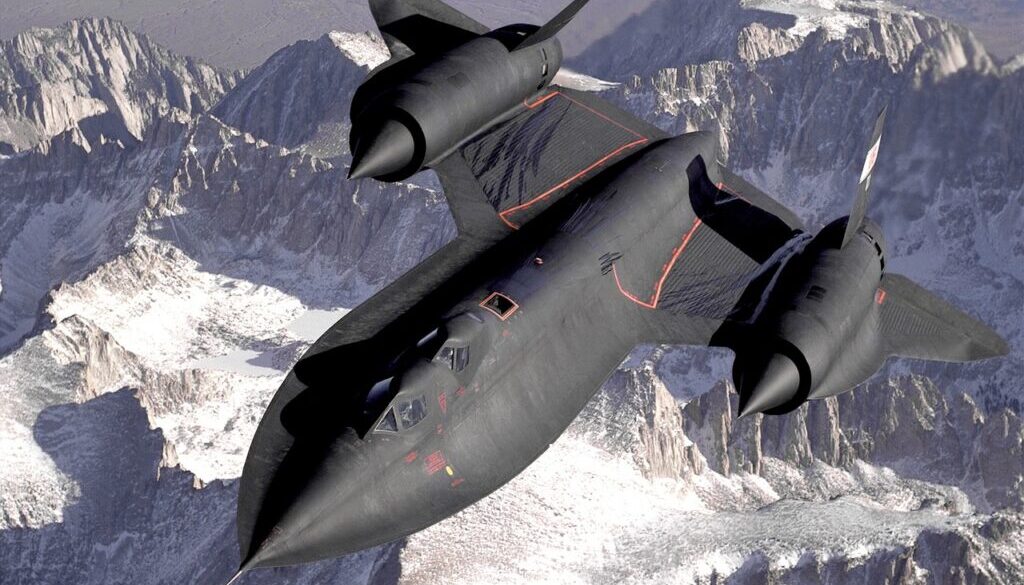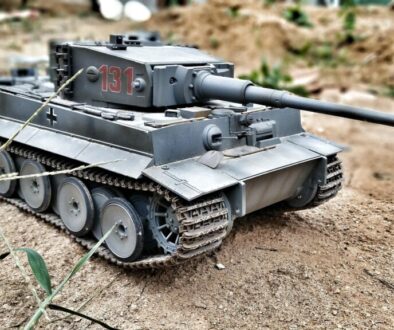how a nighthawk was shot down
Ever wondered what happens when a fighter jet designed to evade radar gets taken down? On May 2, 1999, a Serbian missile operator did the unthinkable – shot down an F-117 Nighthawk, America’s “invisible” stealth aircraft.
Not exactly the Sunday afternoon Colonel Dani had planned while sipping coffee outside Belgrade.
The shootdown shocked military experts worldwide, proving even the most advanced stealth technology isn’t bulletproof. This F-117 Nighthawk incident exposed critical vulnerabilities in what many considered an untouchable weapon system.
Here’s the kicker though – the Serbs didn’t use some fancy next-gen technology to pull this off. They used Soviet-era equipment and simple yet brilliant tactics that the Pentagon never saw coming.
The Nighthawk Aircraft: A Technical Overview
Key specifications and capabilities
The F-117 Nighthawk isn’t just any aircraft – it’s a revolution with wings. This single-seat, twin-engine stealth attack aircraft packs a serious punch in a surprisingly compact frame.
Flying at subsonic speeds (around 0.92 Mach), the Nighthawk might not win any races, but speed was never its game. Its combat radius of roughly 540 nautical miles and service ceiling of 45,000 feet gave it impressive reach. What really sets it apart? The ability to carry up to 5,000 pounds of ordnance in an internal weapons bay – keeping those bombs and missiles tucked away from radar detection.
Historical significance in military operations
The Nighthawk changed warfare forever when it debuted in combat during Operation Just Cause in Panama (1989). But it was during the 1991 Gulf War where it truly proved its worth.
Despite making up just 2.5% of the coalition aircraft, F-117s struck over 40% of the strategic targets in the first days of the air campaign. These black jets slipped through Iraqi air defenses like ghosts, hitting high-value targets with surgical precision while conventional aircraft would have faced significant danger.
Advanced stealth technology
The magic of the Nighthawk isn’t in what you see – it’s in what you don’t. Its bizarre, faceted design isn’t for looks – each angled panel specifically redirects radar waves away from receivers.
The aircraft’s skin contained radar-absorbing materials (RAM) that soaked up electromagnetic energy. Special coatings reduced infrared signature, making heat-seeking missiles less effective. Even engine exhaust was carefully shielded and cooled.
Perhaps most impressive was its radar cross-section – about the size of a small bird, despite being a 65-foot-long aircraft. Basically, it was practically invisible to conventional radar systems of its era.
The Incident Background
A. Date and location details
The F-117 Nighthawk shootdown happened on March 27, 1999, during NATO’s Operation Allied Force in Yugoslavia. This military campaign was in full swing when the unthinkable occurred near the village of Buđanovci, about 45 kilometers northwest of Belgrade, Serbia (then part of the Federal Republic of Yugoslavia).
It was around 8:15 PM local time when the Nighthawk, flying under the call sign “Vega 31,” was suddenly struck by a surface-to-air missile. The night sky lit up as the once-invisible aircraft became all too visible, tumbling from the clouds in flames.
B. Political context during the event
The shootdown didn’t happen in a vacuum. NATO had launched Operation Allied Force to force Yugoslav President Slobodan Milošević to withdraw forces from Kosovo, where ethnic Albanians faced severe persecution. The bombing campaign was controversial from the start – no UN Security Council resolution authorized it.
Tensions were sky-high. Russia strongly opposed NATO’s intervention, seeing it as Western aggression against their Slavic allies. The Yugoslav government portrayed the conflict as defending sovereign territory against foreign invaders.
C. Parties involved in the conflict
On one side stood NATO, led by the United States, flexing its military muscle after the Cold War. The Alliance deployed its most advanced aircraft, including the supposedly untouchable F-117.
On the defending side was the Yugoslav Army, specifically its 3rd Battalion of the 250th Air Defense Missile Brigade. This unit, commanded by Colonel Dani Zoltán, used outdated Soviet-era S-125 Neva surface-to-air missile systems (NATO reporting name: SA-3 Goa).
D. Strategic importance of the mission
That night’s mission was part of NATO’s strategy to cripple Yugoslavia’s military infrastructure and command capabilities. The F-117 was specifically targeting the Yugoslav Army headquarters in Belgrade.
The stealth fighters represented America’s technological edge – they could strike high-value targets with minimal risk. Their invisibility to radar was considered absolute, making them perfect for hitting heavily defended areas early in a campaign.
For Yugoslavia, defending against such strikes was vital for military morale and civilian protection. The ability to resist the world’s most powerful military alliance became a strategic necessity for the Milošević regime’s survival.
The Shooting Down Event
A. Anti-aircraft systems used
The Nighthawk met its match with the Soviet-designed S-125 Neva/Pechora system (NATO designation: SA-3 Goa). This wasn’t cutting-edge tech by any means – we’re talking about 1960s hardware that the Yugoslavian forces modified with some clever hacks. They enhanced the radar systems and created a more mobile deployment strategy, allowing them to relocate quickly after firing.
What’s wild is how basic yet effective this setup was. While the US was pouring billions into stealth tech, the Yugoslavs brought down a $42 million aircraft with a system worth a tiny fraction of that cost.
B. Detection methods that overcame stealth
Stealth isn’t invisibility – and the Yugoslavs proved it. They basically caught the F-117 by:
- Using multiple radar frequencies simultaneously
- Powering up their systems only briefly to avoid counter-detection
- Setting radar traps along predicted flight paths
- Taking advantage of atmospheric conditions that night
The Yugoslavs also noticed that NATO aircraft followed predictable flight patterns. When you’re flying the same routes repeatedly, even the most advanced stealth becomes vulnerable.
They also caught a lucky break – the F-117’s bomb bay doors were open during the attack run, dramatically increasing its radar signature. That momentary exposure was all they needed.
C. Pilot actions and evasive maneuvers
The pilot, Lieutenant Colonel Dale Zelko, followed standard operating procedures when the missile lock warning blared in his cockpit. He attempted a series of evasive maneuvers, but the F-117’s design prioritized stealth over maneuverability.
Unlike fighter jets built for dogfighting, the Nighthawk’s angular shape and relatively underpowered engines limited its ability to perform rapid evasive actions. When Zelko realized he was locked on, he faced a difficult choice between maintaining his attack run or breaking off.
The decision delay proved critical. By the time he attempted to evade, the missile was already tracking too close to outmaneuver.
D. The critical moment of impact
The missile didn’t need to score a direct hit. When it detonated near the aircraft, the shrapnel tore through the left wing, causing catastrophic damage to flight control systems. The F-117’s fly-by-wire system tried to compensate, but the damage was too severe.
At 8:15 PM local time, the unthinkable happened – a stealth aircraft plummeting from the sky. The pilot managed to eject safely, but the psychological impact was enormous. America’s invisible weapon suddenly looked very visible indeed.
E. Evidence and confirmation of the hit
The smoking wreckage confirmed what many military analysts thought impossible. Photos quickly circulated showing Yugoslavian troops celebrating around the downed aircraft’s distinctive angular chunks.
NATO initially denied losing any aircraft that night, but the evidence was irrefutable. The wreckage provided Yugoslavian forces (and by extension, their Russian allies) with a treasure trove of stealth technology secrets.
Parts of the F-117 reportedly ended up in Russian hands, accelerating their own stealth research programs. Some pieces even became museum exhibits in Belgrade, where they remain today – tangible proof that even the most advanced technology has its vulnerabilities.
Aftermath and Recovery Operations
A. Search and rescue efforts
When the Nighthawk went down, NATO immediately launched search and rescue operations. They weren’t about to leave one of their pilots stranded in hostile territory. Special operations teams scrambled into action within minutes of the crash, racing against Serbian forces who were just as eager to capture the pilot.
The weather that night? Absolutely terrible. Heavy rain, low visibility, and muddy terrain made the search incredibly difficult. NATO forces had to navigate through enemy territory in these conditions while avoiding Serbian patrols actively hunting for the downed airman.
The rescue operation was code-named “Basher 52” and involved multiple aircraft including MH-53 Pave Low helicopters and A-10 Thunderbolts providing cover. It was a high-stakes race against time.
B. Pilot’s fate and status
The pilot, Lieutenant Colonel Dale Zelko, ejected safely before his aircraft crashed. He survived the ejection but found himself in serious danger – alone behind enemy lines.
Zelko managed to hide for about eight hours before rescue forces reached him. During this time, he used his survival training to evade capture, staying hidden in drainage ditches and wooded areas while Serbian forces searched nearby.
When the rescue team finally reached him around 0645 hours the next morning, Zelko was exhausted but uninjured. His safe return was a massive relief for NATO command, who feared the pilot might be captured and used for propaganda purposes.
C. Aircraft wreckage analysis
The wreckage told an interesting story. Serbian forces quickly secured the crash site and gathered significant pieces of the aircraft before NATO could destroy them with follow-up strikes.
Analysis revealed the F-117 was hit by an S-125 Neva/Pechora surface-to-air missile system – fairly outdated Soviet-era technology. The missile exploded near the aircraft, sending shrapnel through critical systems and causing catastrophic damage.
What surprised analysts most? The Serbians hadn’t used any advanced techniques to detect the stealth aircraft. They simply spotted a tiny gap in stealth coverage: when the bomb bay doors opened, the plane’s radar cross-section temporarily increased.
D. Technology compromised in the incident
This shootdown was a serious technological compromise. Parts of the F-117’s skin, containing classified stealth materials and construction techniques, fell into Serbian hands. Later, these pieces reportedly made their way to Russian and Chinese military intelligence.
The incident exposed critical vulnerabilities in stealth technology. It proved that even the most advanced aircraft could be detected with proper tactics and timing. Military strategists had to rethink their assumptions about stealth invulnerability.
The Russians and Chinese studied these materials extensively, helping them develop their own counter-stealth technologies and advance their own stealth aircraft programs. Some military experts believe the advancements in Russian S-400 systems were directly influenced by what they learned from these wreckage pieces.
Military and Diplomatic Consequences
A. Official statements and reactions
When the F-117 Nighthawk was shot down over Serbia in 1999, the Pentagon initially scrambled to control the narrative. Their first statement was pretty bare-bones: “We can confirm an F-117 has been lost. The pilot has been recovered safely.”
NATO’s spokesman James Shea went with the “these things happen” approach: “One strike aircraft lost in 4,000 sorties is actually a pretty impressive record.”
Meanwhile, the Serbian military couldn’t contain their excitement. They broadcast footage of the wreckage on national TV, with soldiers climbing over the scattered remains. President Slobodan Milošević awarded the soldiers responsible with the Order of the Yugoslav Flag.
Russia’s reaction? Quiet satisfaction. They sent military intelligence officers to the crash site within hours—not exactly subtle about their interest in getting their hands on stealth technology secrets.
B. International tensions and negotiations
The shootdown immediately cranked up tensions between NATO and Yugoslavia. The wreckage became a hot commodity, with American, Russian, and Chinese intelligence services all desperate to get their piece.
Behind closed doors, the U.S. reportedly offered serious cash to recover key components. Serbia played hardball, allegedly sharing some fragments with Russian and Chinese military attachés before American negotiators could secure the site.
The incident forced emergency diplomatic channels to open between Washington and Belgrade—channels that were supposedly closed due to the ongoing conflict.
C. Changes in military doctrine following the incident
Talk about a wake-up call. The Nighthawk downing forced the Pentagon to rewrite parts of their stealth operation playbook.
Military planners implemented new protocols:
- No more predictable flight paths
- Required jamming aircraft support for stealth missions
- Revised minimum altitudes for stealth aircraft
- Complete overhaul of mission planning software
The Air Force quietly admitted they’d gotten complacent, believing their stealth aircraft were practically invisible. They weren’t.
D. Impact on similar aircraft deployment strategies
After the incident, stealth aircraft deployments changed overnight. The remaining F-117s started flying only in severe weather and used different approach patterns each mission.
The B-2 Spirit bomber crews received new training focused on evading the exact type of radar that caught the Nighthawk.
The fallout also pushed billions into developing the next generation of stealth tech. The F-22 and F-35 programs got fresh funding, with engineers specifically addressing the vulnerabilities exposed by the Serbian shootdown.
Defense contractors started selling “stealth management systems” to allies, essentially teaching them when and how to risk their expensive stealth assets.
Technical Analysis of the Vulnerability
A. Flaws in the stealth system exposed
The F-117 Nighthawk wasn’t as invisible as everyone thought. What made this supposedly untouchable aircraft vulnerable? For starters, its stealth design had a critical weakness: it was optimized for higher-frequency radar bands. The Serbian forces figured this out and used older, long-wavelength radar systems that could detect the aircraft’s presence, even if they couldn’t get a perfect lock.
Another problem? The Nighthawk had to open its bomb bay doors during missions. This temporarily increased its radar cross-section dramatically – like suddenly turning on a light in a dark room. The Serbs timed their shots during these moments of vulnerability.
B. How defenses succeeded in targeting
The Serbs weren’t just lucky – they were smart. They created an intricate network of spotters equipped with mobile phones who tracked NATO flight patterns over weeks. They noticed the stealth aircraft often took predictable routes.
Their air defense operators also switched their radar systems on for just brief moments – not long enough for NATO’s anti-radiation missiles to target them, but long enough to get position data. By combining multiple radar readings from different locations, they pieced together the puzzle of the Nighthawk’s location.
C. Lessons for future aircraft design
This shootdown completely changed stealth aircraft development. First lesson? Multi-spectrum stealth matters. Modern designs now address various radar frequencies, not just the high-frequency bands.
Communication discipline became non-negotiable. The predictable flight patterns that helped bring down the F-117 taught military planners to vary routes and timing.
Defensive systems also evolved. Newer stealth aircraft incorporate active jamming alongside passive stealth features – a belt-and-suspenders approach to survival.
Most importantly, the incident shattered the myth of invulnerability. No technology is foolproof, and assuming otherwise is a fatal mistake in aircraft design.

The downing of the Nighthawk aircraft represents a pivotal moment in modern military history, exposing unexpected vulnerabilities in stealth technology that was once considered nearly impenetrable. From its technical specifications to the strategic aftermath, this incident fundamentally altered military thinking about air defense systems and the limits of stealth capabilities. The detailed analysis of how conventional radar systems were able to detect and target such an advanced aircraft continues to influence combat aircraft design and tactical planning today.
As military technology continues to evolve, the lessons from this incident remain relevant for defense strategists and engineers alike. The vulnerability exposed in what was considered an invulnerable system serves as a powerful reminder that innovation in warfare is constant and reactive. For those interested in military aviation or defense systems, understanding this case study offers valuable insights into the complex relationship between offensive capabilities and defensive countermeasures that continues to shape modern conflict.

